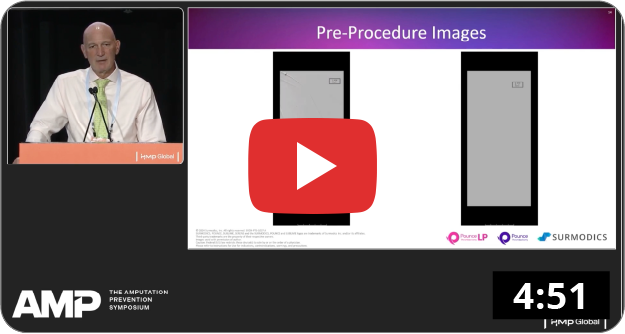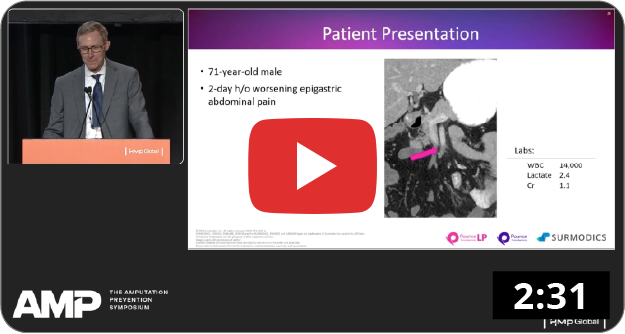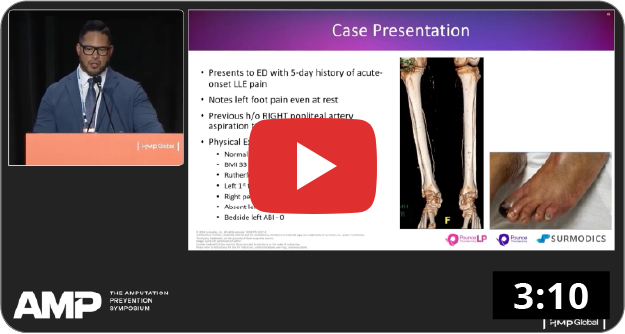
Conference Videos
Physicians discuss removal of peripheral arterial thrombi and emboli with the Pounce™ Thrombectomy Platform, with case reviews
Disrupting Peripheral Arterial Thrombectomy—Above and Below the Knee: The Impact of the Pounce™ Thrombectomy Platform in Removing Acute-to-Chronic Thrombi and Emboli in Occluded Peripheral Vessels.
AMP 2024 Symposium
Recorded at AMP 2024
Dan Clair, MD, Eric Scott, MD and Joseph Blas, MD, FACS discuss their experiences utilizing the Pounce™ Thrombectomy Platform to remove acute-to-chronic thrombi and emboli from occluded peripheral vessels above and below the knee. The videos include a review of cases using this fully mechanical solution.
Arm Ischemia in the Setting of Subarachnoid Hemorrhage
with Dan Clair, MD
Video 1 of 6
Aspiration vs. Mechanical Thrombectomy for Treatment of an Ischemic Leg
with Eric Scott, MD
Video 2 of 6
Aspiration vs. Mechanical Thrombectomy for Treatment of an SMA Occlusion
with Eric Scott, MD
Video 3 of 6
Infrapopliteal Occlusion Successfully Treated with Pounce™ Thrombectomy System
with Joseph Blas, MD
Video 4 of 6
Treatment of Distal Embolization after Recanalization using the Pounce™ System
with Joseph Blas, MD
Video 5 of 6
Proximal Tibial Artery Occlusion Treated with the Pounce™ Thrombectomy System
with Joseph Blas, MD
Video 6 of 6
ISET 2024 Symposium:
Disrupting Peripheral Arterial Thrombectomy: The Impact of the Pounce™ Thrombectomy System in Removing Acute-to-Chronic Thrombi and Emboli in Occluded Peripheral Vessels
Gary Ansel, MD, joins Sean Lyden, MD, Lucas Ferrer Cardona, MD, and Dean Ferrera, DO, for a discussion on restoring peripheral flow with the Surmodics Pounce™ Thrombectomy System. The video includes a review of cases demonstrating removal of peripheral arterial thrombi and emboli without aspiration using this fully mechanical solution.
ISET 2023 Symposium:
A Paradigm Shift in Arterial Thrombo-Embolectomy: Obtaining On-Table Results with the Pounce™ System
Gary Ansel, MD, joins Bruce Gray, MD, and Joseph Griffin, MD to describe their experience with the Pounce™ Thrombectomy System and review various cases demonstrating removal of arterial thrombi and emboli without aspiration using this fully mechanical solution.
Intended Use:
The Pounce™ Thrombectomy System is intended for the non-surgical removal of thrombi and emboli from the peripheral arterial vasculature.
Contraindications:
The device is contraindicated for use in patients who cannot receive recommended intravenous anticoagulant therapy.









